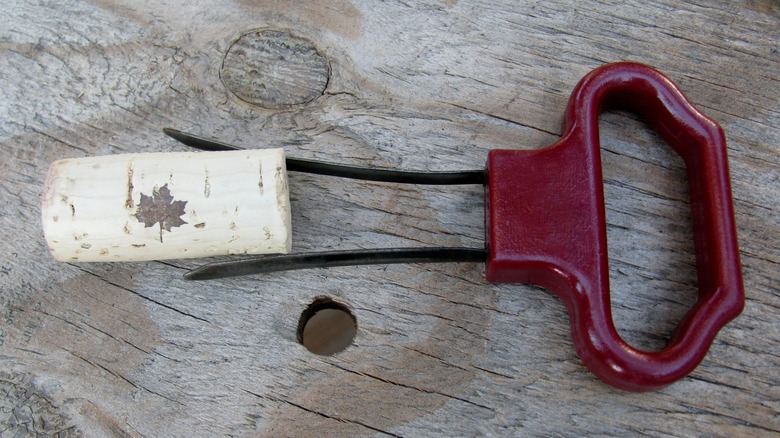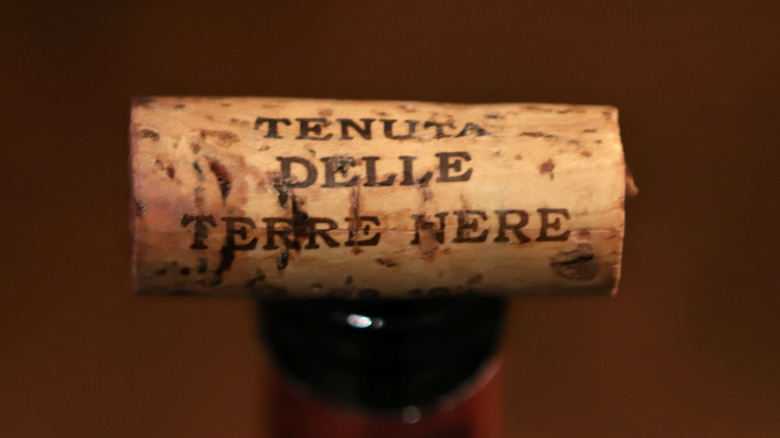The Reason Twin Blade Wine Openers Are Better For Old Bottles
Whether you've purchased an expensive aged wine from a retailer or you've been aging wine in your home cellar, corks can be a struggle to remove if they are brittle or broken. Traditional tools like corkscrews and wine keys, often seen used by wait staff, can easily crumble an already weakened cork if misused. This can lead to pieces of the cork falling into the wine and spoiling the experience of the drink or re-inserting a brittle cork back into the bottle and having bits of the cork floating in the wine after it was already closed. Either way, it's unpleasant, and there are ways to avoid this from happening to your aged wine.
Though there are a variety of hacks on the internet explaining how to remove a broken cork from a wine bottle, there is a tool designed to do just that. Twin-blade wine openers, or ah-so openers, extract corks in any condition in one piece.
How to use a twin-blade opener
Twin-blade wine openers are a great alternative to traditional corkscrews as they can help prevent pieces of the cork from falling into the bottle. As the name suggests, twin-blade wine openers feature two blades that are inserted alongside the cork and then carefully lifted out of the bottle. Unlike a traditional wine key or corkscrew, the ah-so opener ensures the cork is removed in one piece, and cork bits aren't left to sit in the wine.
These openers also allow servers, wine enthusiasts, and sommeliers to place the cork back in the bottle for storage. Properly inserting the cork back into the bottle may require some work if the cork is damaged, but nevertheless, if you aren't drinking the wine in one sitting, it should be re-corked. Properly re-corking aged wine bottles with an ah-so opener lets you enjoy the wine much longer and prevents the wine from spoiling or altering the flavor profile.
How to prevent dry and brittle corks
Over time, corks can dry out, split in half, or crumble for several reasons. Maybe the cork was already dry before it was placed in the bottle, or the wine wasn't stored properly, or perhaps someone opened the wine and put the cork back in the bottle incorrectly. Whatever the reason, corks can be a hassle to remove, and the drinker could end up with cork bits in their wine, which is not ideal. Typically, issues with corks can happen to aged bottles of wine if they are improperly stored.
To avoid broken, dry, or crumbled corks, wine should be stored in a dark and cool place like a cellar, wine cooler, or fridge for short periods of time. Corks are made of natural material, so they break down depending on the temperature and humidity. When storing for long periods, the bottles should be placed on their side in a cooler or cellar to keep to cork moist. Not doing so can dry the cork and allow air to enter the bottle.


